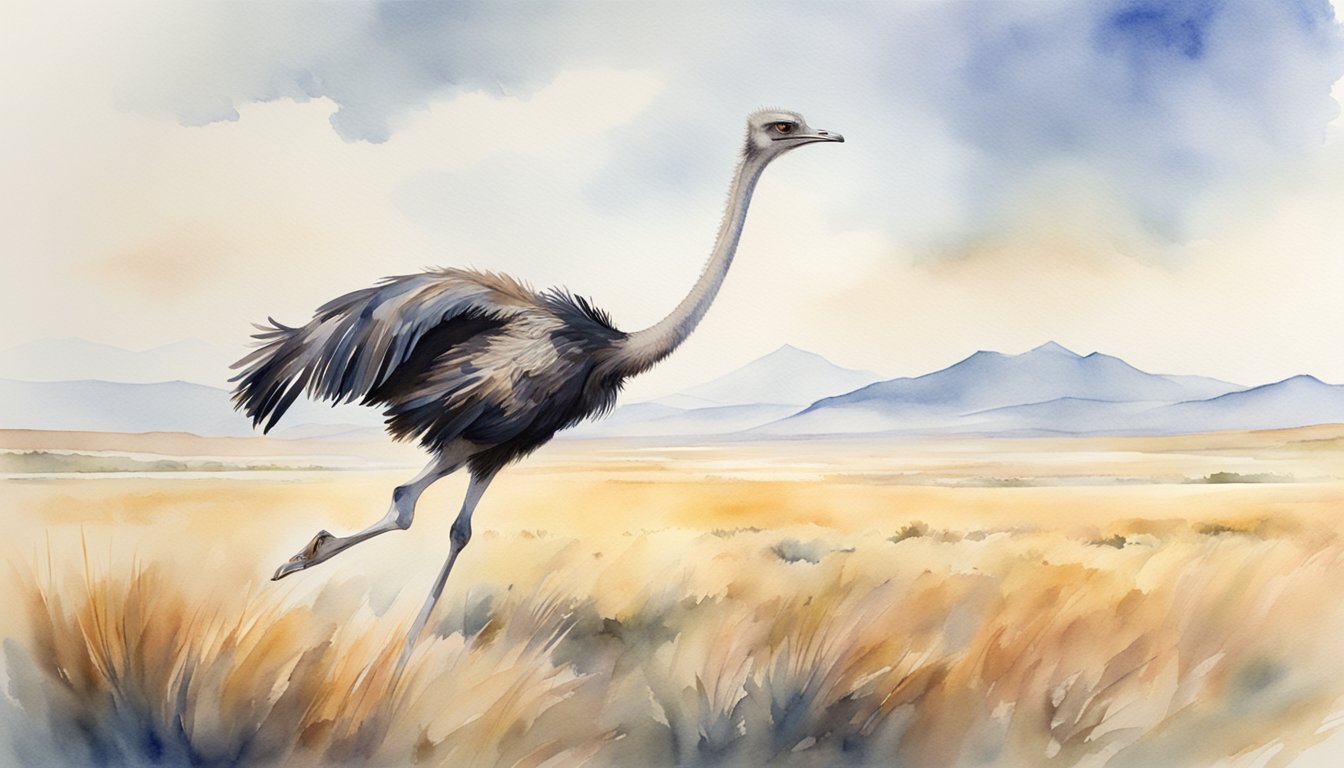Ostrich Basics

The ostrich is a marvel of the bird world, holding records for both its size and speed. Understanding these creatures includes examining their distinct physical traits and global distribution.
Physical Characteristics
Ostriches exhibit an array of physical characteristics that distinguish them from all other birds. Adults can be identified by their impressive stature: a male ostrich can stand up to 2.75 meters—almost half of which is neck—and can weigh over 150 kg, while the female is generally somewhat smaller. This size makes the ostrich the largest living bird. Their long legs are not just for height; these powerful limbs can cover 10 to 16 feet in a single stride, propelling the ostrich to top speeds that can reach 70 km/h, making it the fastest bird on land.
Their wings, while not used for flight, still serve an important role. The wings help in mating displays, provide balance during running, and are used to shade chicks from the intense African sun. Each foot has two toes, with the main toe bearing a large nail which adds to the ostrich’s defensive capabilities. Despite being flightless, their feathers are an essential aspect of their appearance, with males flaunting bold black and white plumage and females donning a more camouflaged brown.
Species and Distribution
The ostrich is found predominantly in open country across Africa. Historically, different species existed, like the Arabian ostrich, but today variations are limited preeminently to the common ostrich (Struthio camelus), with its subspecies being distributed across various African regions. The North African ostrich, South African ostrich, and Somali ostrich are the notable subspecies of the genus Struthio.
They belong to the order Struthioniformes, a group of flightless birds known as ratites, which also includes emus and kiwis. Within the big picture of bird evolution, ostriches are part of the Palaeognathae infraclass, an ancient lineage separate from most modern birds. Their wide distribution across Africa is indicative of habitats ranging from savannas to desert edges, highlighting their adaptability to different environments on the continent.
Ostrich Life and Behavior
The ostrich is the world’s largest bird and exhibits unique behaviors from its remarkable reproductive strategies to its interactions with humans and other species. This section will explore various aspects of the ostrich’s life including their reproduction, diet, and the nature of their relationship with humans.
Reproduction and Lifespan
Ostriches typically have a lifespan ranging from 30 to 40 years. During the breeding season, the dominant male may mate with the dominant female to establish a harem, which includes several females. The female lays her eggs in a single communal nest, a strategy that improves the chances of survival for the offspring. All the females in the harem lay their ostrich eggs in the same nest, and both the male and females take turns at incubation. The large and sturdy ostrich eggs are noted for their durability and size.
- Learn more about their breeding patterns from National Geographic.
Diet and Predators
Ostriches are omnivores and their diet includes a variety of plants, seeds, insects, lizards, and roots. They have a gizzard, an organ that helps grind their food, and they often swallow small stones to aid the process. Despite their size, ostriches are not immune to predation. While adults are less threatened due to their strong legs and powerful kicks that can fend off threats like lions, the chicks are more vulnerable. Ostriches do not bury their heads in the sand when threatened but may lie low and press their necks to the ground to hide.
- Explore their dietary habits in more detail through Britannica.
Ostriches and Humans
Humans have interacted with ostriches for centuries, with uses ranging from farmers raising them for their meat, leather, and feathers. While the conservation status of ostriches is currently listed as least concern, their populations can be affected by overexploitation and habitat destruction. Living mostly in African savannas, their natural habitat, ostriches have adapted to coexist with human activities, though this has sometimes led to ostriches being farmed in captivity for various products.
- Read more about ostriches in human history at Animalia.bio.

